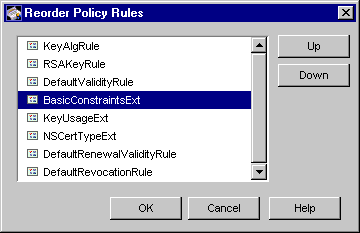The Reorder Policy Rules window appears. It lists the currently registered
policy plug-in modules in the order in which they are executed by the
subsystem; the server executes the rules on a first-come-first-served basis,
overwriting the configuration determined by the previous rule, if any.
